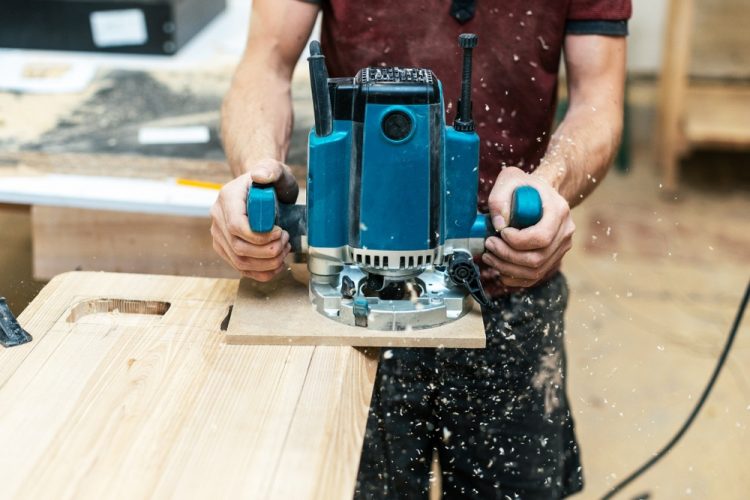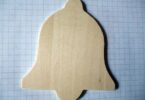A wood router is one of many power devices you need if you intend to work on wood or want to do some home projects. As with many other woodworking power devices, there are various options to choose from when purchasing a wood router.
Usually, you will have to choose between a fixed router or a plunge router. Both wood routers do a good job and will be ideal to have. So, if you are able to purchase both, you’ll have some fantastic tools for your upcoking projects.
Fixed vs Plunge Router: What’s the Difference

1. Basic Features
Plunge routers are more complex over fixed routers and will always be an excellent alternative for the more skilled woodworkers. With a little more commitment, this wood router is much more versatile and will, therefore, be suitable for a wide range of projects. The oldest of the two wood router categories are fixed wood routers. They will also have a fixed base structure, as their name implies, indicating that you can not plunge into the wood to initiate a cut from the center of the wood.
2. Accuracy
If your project requests a higher level of precision, the right choice should be the fixed wood router. The fixed wood routers are widely used in joinery because they deliver some superior accuracy. The bits don’t move, unlike with a plunge wood router. That implies that once you have set it up, it is fixed in that location so you can, therefore, count on having a precise cut. Although the plunge wood routers are not too far behind them, the fixed wood routers are certainly superior when it comes to accuracy.
3. Uses
Due to variations in layout and adaptability, these two wood routers should stand out in different situations. Fixed wood routers have a predetermined function for even-depth cutting. On the other hand, plunge wood routers provide more practical use since they can cut, dip, and lift to pull up wood products physically. That being said, fixed wood routers appear to be affordable, lightweight, and ideal for sharpening the edges. Plunge wood routers enable straight vertical moving so thicker woods, molasses and grooves can be cut. Typically, plunge wood routers are much more difficult to use for beginners.
4. Size and Weight
The fixed wood routers are more portable than the plunge wood routers. The plunge wood routers have a moving framework that makes them less portable than the fixed ones. Nevertheless, as long as the wood router serves its purpose, you don’t have to see whether it’s compact or no. The fixed wood routers are the perfect option if you want to keep a wood router in your toolset and still would like it to be lightweight. The compact design of the fixed wood routers weights less, which is perfect if you can not mount the device to the table.
5. Reliability
In woodworking, reliability is very important, and this becomes more so when working with different elements that require you to have identical cuts. If you want precision and the ability to replicate the same cuts many times, your best choice is the fixed wood router. You will only have to configure your needed depth with the fixed wood router, and it will stay the same for as long as you’d like.
The ability of the plunge wood router to change a particular cutting depth during woodworking is one of its major strengths. Yet, if you’d like to make repeated cuts, it will be its greatest weakness, as it makes it difficult to retain the same depth settings.
6. Versatility
Plunge wood routers give you more flexibility and versatility than fixed wood routers that can only remain at one location, making them ideal for people who have to deal with different cutting depths. There are so many methods to cut wood using a plunge wood router.
Plunge wood routers can be used to create dadoes, mortices, grooves, and more. In aspects of versatility, fixed wood routers will not even come near to the plunge wood routers. The shortage of versatility tends to make them less in demand for particular woodwork projects.
7. Maintenance
In terms of responsibility and maintenance, it is relatively the same to maintain a fixed and plunge wood routers. That said, you must always read the user’s manuals to see if your wood router needs special attention. Nonetheless, you need to remember to keep moving along the grain while using either a fixed or plunge wood router.
You should also always operate against the rotation of the bits. That ensures that you maintain control of the rotation, rather than attempting to fight it. Another practical suggestion is to use bits pilots with ball-bearings. That keeps bits secure and in balance.
8. Ease of Use
Fixed and plunge wood routers function in two different ways. Although plunge wood routers are usually considered more user friendly, the fixed wood routers provide more control. Typically, the wood routers with a fixed base give hand grips on either side that provides greater control and stability.
Plunge wood routers deliver provides more applications, but the fixed wood routers ensure each cut is at the same depth. Finally, although the plunge wood routers can make massive vertical cuts quickly, the wood routers with a fixed base can be combined with a router table for more reliable use. All in all, it is hard to tell which one of the two is easier to use.
9. Cost
Since wood routers are power devices, they would not be cheaper, although being generally smaller than most other devices such as power drills and saws. Due to the higher usability over fixed wood routers and the ability to dip safely into the wood, plunge wood routers usually cost a little more.
A common plunge wood router could cost up to twice what you’d pay for the fixed wood router. As with every other power device, what you spend for each of the two wood routers depends on the manufacturer and model and other aspects like what you receive in the package.
10. Safety Concerns
With a fixed wood router, the engine is calibrated and fixed with the foundation for preset cutting depth. The rotor can be raised and lowered inside the foundation with a plunge wood router while the engine is operating.
At the plunge wood router, the cutting bits start to cut only once the machine starts cutting. That provides more security while using a fixed wood router, which immediately starts cutting bits when the motor is switched on. That’s why the plunge wood router is considered to be safer over a fixed wood router.
Plunge Router vs Fixed: Who’s the Winner?
That’s a difficult decision for everyone to make. The ideal wood router for your work depends on what kind of project you do and your woodworking experience. For instance, if you’re a beginner in woodworking, you could perhaps begin with the fixed wood routers since they are simple to use and will serve the majority of your tasks as a beginner.
Once you have completed several DIY tasks and acquired some skill, you may want to check out the plunge wood routers. The plunge wood routers provide a lot of customization options and are much more flexible than the fixed wood routers. You understand your project more than anybody else, so the final decision to buy a fixed or plunge wood router must be on you.
Conclusion
Wood routers are quite useful tools for any woodworker as they can help with anything from signs to complex designs for your workpiece material and joinery. Whenever it comes to choosing between the two popular types of wood routers, which are plunge and fixed wood routers, you would first have to recognize your particular needs and then compare them to each of the two. That should be a simple task with their many differences outlined above.
FAQs
1. Can a Plunge Router Be Used as a Fixed Router?
A plunge wood router lets you achieve your desired cutting depth without needing to drop angular cut into your project. However, some jobs are complicated, if not unthinkable, without the need for a plunge wood router.
2. What Is the Advantage of a Plunge Router?
The plunger wood router provides controlled vertical motion during cutting, so you can dive bits into the edges of your work material without reason to worry. It’s also easy to make mortises and deep grooves, and design or pattern jobs as well.
3. What Is the Advantage of a Fixed Base Router?
When you use a fixed wood router, your fingers are far closer to the work material, so you have more control as you push the wood router over the work material. That corresponds to improved control. A fixed wood router is therefore suitable for freehand wood and jig work due to control and reliability while using it.








